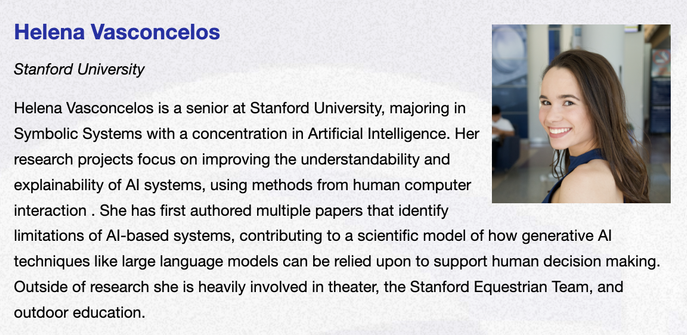Michael Bernstein
@msbernst@hci.social
- 924 Followers
- 230 Following
- 98 Posts
Stanford CS prof, human-computer interaction and social computing. Surely I will be interesting and entertaining here, even though I failed to achieve this on Twitter.
Stanford's Symbolic Systems Program is hiring a three-year lecturer position: https://academicjobsonline.org/ajo/program/29530
Big congratulations to Helena Vasconcelos on winning a 2025 CRA Outstanding Undergraduate Researcher Award! https://cra.org/about/awards/outstanding-undergraduate-researcher-award/
Coming very soon: #cscw2024 panel on "Is Human-AI Interaction CSCW?" alongside @asb, @jbigham, @andresmh, and Merrie Morris!
https://programs.sigchi.org/cscw/2024/program/content/179232
You just got asked to review another paper; your third emoji is your review.
Our argument is that design patterns largely cluster within cells of the Form-From design space. For example, threaded spaces commonly utilize upvotes, threaded networks often use resharing, and flat networks typically require posting on a "wall" rather than a central feed.
If you don't like our 2x3 space, there's also a full 62-dimension treatment in the appendix from our inductive process, as well as a set of 11 categories those fall into. They're more useful for fine-grained distinctions.
Form-From asks two questions: (1) What is the principal shape, or form, of the content: either threaded or flat? (2)~From where or from whom one might receive content, ranging from spaces to networks to the commons?
So just what is this thing? It's been a long time since CSCW introduced Johansen's Time-Space matrix, and at this point a vast majority of social media would fall into the different time - different place quadrant, making it not very productive as a design or theory tool.
